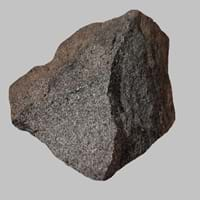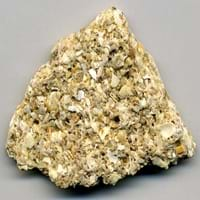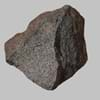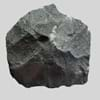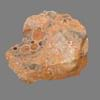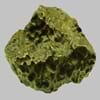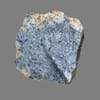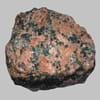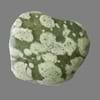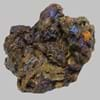Pyrolite and Coquina
Definition
Definition
Pyrolite is an igneous rock consisting of about three parts of peridotite and one part of basalt
Coquina is a sedimentary rock that is composed either wholly or almost entirely of the transported, abraded, and mechanically-sorted fragments of the shells of molluscs, trilobites, brachiopods, or other invertebrates
History
Origin
Pike County, U.S
European Foreland Basins
Discoverer
Unknown
Unknown
Etymology
From the chemical and mineralogical composition of the upper mantle of the Earth
From Concha (Latin)+ Coquina(Spanish) +conch(English)= Couquina (mid 19th century)
Class
Igneous Rocks
Sedimentary Rocks
Sub-Class
Durable Rock, Medium Hardness Rock
Durable Rock, Soft Rock
Family
Group
Plutonic
Not Applicable
Other Categories
Coarse Grained Rock, Opaque Rock
Coarse Grained Rock, Opaque Rock
Texture
Texture
Phaneritic
Clastic
Color
Dark Greenish - Grey
Beige, Buff, Orange
Maintenance
Less
More
Durability
Durable
Non-Durable
Water Resistant
Yes
No
Scratch Resistant
Yes
No
Stain Resistant
No
No
Wind Resistant
No
No
Acid Resistant
Yes
No
Appearance
Rough and Shiny
Layered, Banded, Veined and Shiny
Uses
Architecture
Interior Uses
Decorative Aggregates, Interior Decoration
Decorative Aggregates, Homes, Hotels, Interior Decoration
Exterior Uses
As Building Stone, As Facing Stone, Garden Decoration, Paving Stone
Garden Decoration, Office Buildings
Other Architectural Uses
Curbing
Curbing
Industry
Construction Industry
As Dimension Stone, Cobblestones
Building houses or walls, Construction Aggregate
Medical Industry
Not Yet Used
Not Yet Used
Antiquity Uses
Artifacts, Monuments, Sculpture
Artifacts, Monuments, Sculpture, Small Figurines
Other Uses
Commercial Uses
Creating Artwork, Gemstone, Jewelry, Source of Chromite, Platinum, Nickel and Garnet, Source of Diamonds
Creating Artwork
Types
Types
Dunite, Wehrlite, Harzburgite, Lherzolite
Not Available
Features
Constitutes upper part of the Earth's mantle, Generally rough to touch, Is one of the oldest rock
Available in Lots of Colors and Patterns, Is one of the oldest rock
Archaeological Significance
Monuments
Used
Used
Famous Monuments
Data Not Available
Data Not Available
Sculpture
Used
Used
Famous Sculptures
Data Not Available
Data Not Available
Pictographs
Used
Used
Petroglyphs
Used
Used
Figurines
Used
Used
Fossils
Absent
Present
Formation
Formation
Pyrolite is a fine-grained, hard rock which is a type of metasomatite, essentially altered basalt. It forms with or without crystallization, either below the surface as intrusive rocks or on the surface as extrusive rocks.
Coquina is a sedimentary rock which is formed when billions of small clam-like seashell, called Coquina, or cockleshell are die and hence are deposited, buried and turns into a rock when pressure is applied.
Composition
Mineral Content
Amphibole, Chromite, Garnet, Magnesium, Olivine, Phlogopite, Plagioclase, Pyroxene
Apatite, Augite, Bronzite, Calcite, Chert, Chlorite, Clay Minerals, Epidote, Feldspar, Garnet, Micas, Muscovite or Illite
Compound Content
Ca, Fe, Mg, Potassium, Silicon Dioxide, Sodium, Titanium Dioxide
CaO, Carbon Dioxide, Iron(III) Oxide, MgO
Transformation
Metamorphism
Yes
No
Types of Metamorphism
Burial Metamorphism, Cataclastic Metamorphism, Contact Metamorphism, Hydrothermal Metamorphism, Impact Metamorphism, Regional Metamorphism
Not Applicable
Weathering
Yes
Yes
Types of Weathering
Biological Weathering, Chemical Weathering, Mechanical Weathering
Biological Weathering, Chemical Weathering, Mechanical Weathering
Erosion
Yes
Yes
Types of Erosion
Chemical Erosion, Coastal Erosion, Glacier Erosion, Sea Erosion, Water Erosion, Wind Erosion
Coastal Erosion, Sea Erosion, Water Erosion, Wind Erosion
Properties
Physical Properties
Hardness
5.5-6
1-2
Grain Size
Coarse Grained
Coarse Grained
Fracture
Irregular
Irregular
Streak
White
White
Porosity
Less Porous
Highly Porous
Luster
Shiny
Dull to Vitreous to Submetallic
Compressive Strength
107.55 N/mm2
19
Not Available
Cleavage
Imperfect
Not Available
Toughness
2.1
Not Available
Specific Gravity
3-3.01
1.10-2.24
Transparency
Translucent to Opaque
Opaque
Density
3.1-3.4 g/cm3
2.8-2.9 g/cm3
Thermal Properties
Specific Heat Capacity
1.25 kJ/Kg K
6
Not Available
Resistance
Heat Resistant, Pressure Resistant, Wear Resistant
Heat Resistant, Impact Resistant, Pressure Resistant, Wear Resistant
Reserves
Deposits in Eastern Continents
Asia
China, India, Indonesia, Kazakhstan, Russia, South Korea, Thailand, Turkey
Not Yet Found
Africa
Morocco, South Africa
Not Yet Found
Europe
Finland, France, Georgia, Germany, Great Britain, Italy, Kazakhstan, Netherlands, Norway, Spain, Switzerland, Venezuela
United Kingdom
Others
Not Yet Found
Not Yet Found
Deposits in Western Continents
North America
Canada, USA
USA
South America
Brazil
Not Yet Found
Deposits in Oceania Continent
Australia
New Zealand, Western Australia
Not Yet Found
All about Pyrolite and Coquina Properties
Know all about Pyrolite and Coquina properties here. All properties of rocks are important as they define the type of rock and its application. Pyrolite belongs to Igneous Rocks while Coquina belongs to Sedimentary Rocks.Texture of Pyrolite is Phaneritic whereas that of Coquina is Clastic. Pyrolite appears Rough and Shiny and Coquina appears Layered, Banded, Veined and Shiny. The luster of Pyrolite is shiny while that of Coquina is dull to vitreous to submetallic. Pyrolite is available in dark greenish - grey colors whereas Coquina is available in beige, buff, orange colors. The commercial uses of Pyrolite and Coquina are creating artwork, gemstone, jewelry, source of chromite, platinum, nickel and garnet, source of diamonds.
|
||
|
||
|
